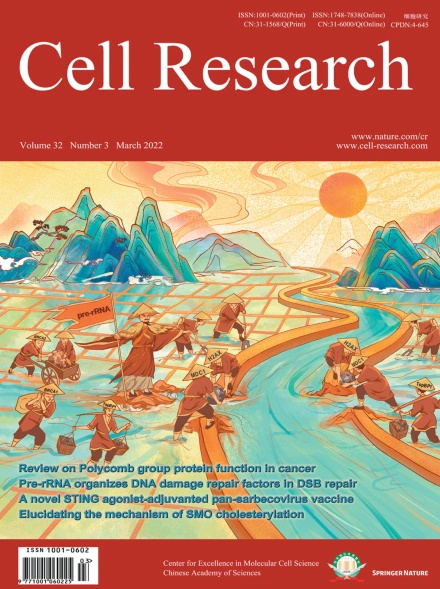
Advanced Search
Submit Manuscript
Advanced Search
Submit Manuscript
Volume 32, No 3, Mar 2022
ISSN: 1001-0602
EISSN: 1748-7838 2018
impact factor 17.848*
(Clarivate Analytics, 2019)
Volume 32 Issue 3, March 2022: 315-318 |
Loss of Spike N370 glycosylation as an important evolutionary event for the enhanced infectivity of SARS-CoV-2
Shuyuan Zhang1,† , Qingtai Liang2,3,† , Xinheng He4 , Chongchong Zhao5 , Wenlin Ren6 , Ziqing Yang2,3 , Ziyi Wang1 , Qiang Ding6 , Haiteng Deng5 , Tong Wang4,* , Linqi Zhang2,3,* , Xinquan Wang1,*
1The Ministry of Education Key Laboratory of Protein Science, Beijing Advanced Innovation Center for Structural Biology, Beijing Frontier Research Center for Biological Structure, School of Life Sciences, Tsinghua University, Beijing, ChinaDear Editor,
SARS-CoV-2 belongs to the Sarbecovirus subgenus of betacoronaviruses and other members in this subgenus include SARS-CoV and coronaviruses mainly found in bats1. It is generally believed that like SARS-CoV and MERS-CoV, SARS-CoV-2 has a natural origin and was selected either in animal hosts before zoonotic transfer, or in humans following zoonotic transfer2. However, the molecular determinants for host expansion of SARS-CoV-2 from animal reservoirs to humans remain largely unclear. The Spike (S) glycoprotein of coronaviruses mediates viral entry by binding host receptor and fusing viral and cellular membranes3. SARS-CoV-2 S glycoprotein contains 22 N-glycosylation sites and 17 O-glycosylation sites4. Cryo-EM structures of the bat RaTG13 and pangolin PCoV_GX coronavirus S trimers showed that, besides protein–protein interactions, one RBD is also contacted by N-glycans linked to three asparagine residues of the neighboring S protomer (N165 and N234 in the NTD and N370 in the RBD) (Supplementary information, Fig. S1a)5. However, the N370 glycosylation is lost in the SARS-CoV-2 S glycoprotein due to the threonine-to-alanine mutation at position 372 (Supplementary information, Fig. S1a). In contrast, the typical -NST- glycosylation motif is highly conserved among eight SARS-CoV-2-related Sarbecovirus members including SARS-CoV and coronaviruses from bat and pangolin (Supplementary information, Fig. S1b).
https://doi.org/10.1038/s41422-021-00600-y